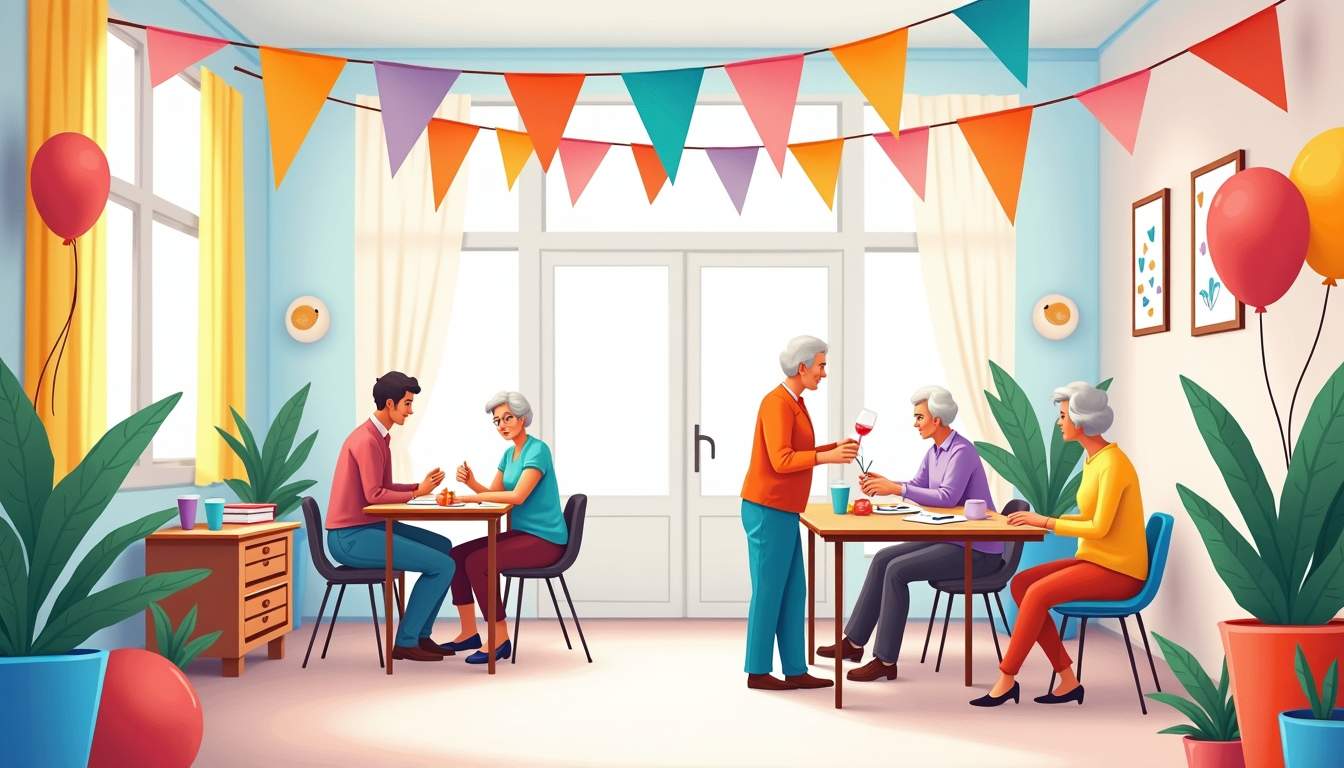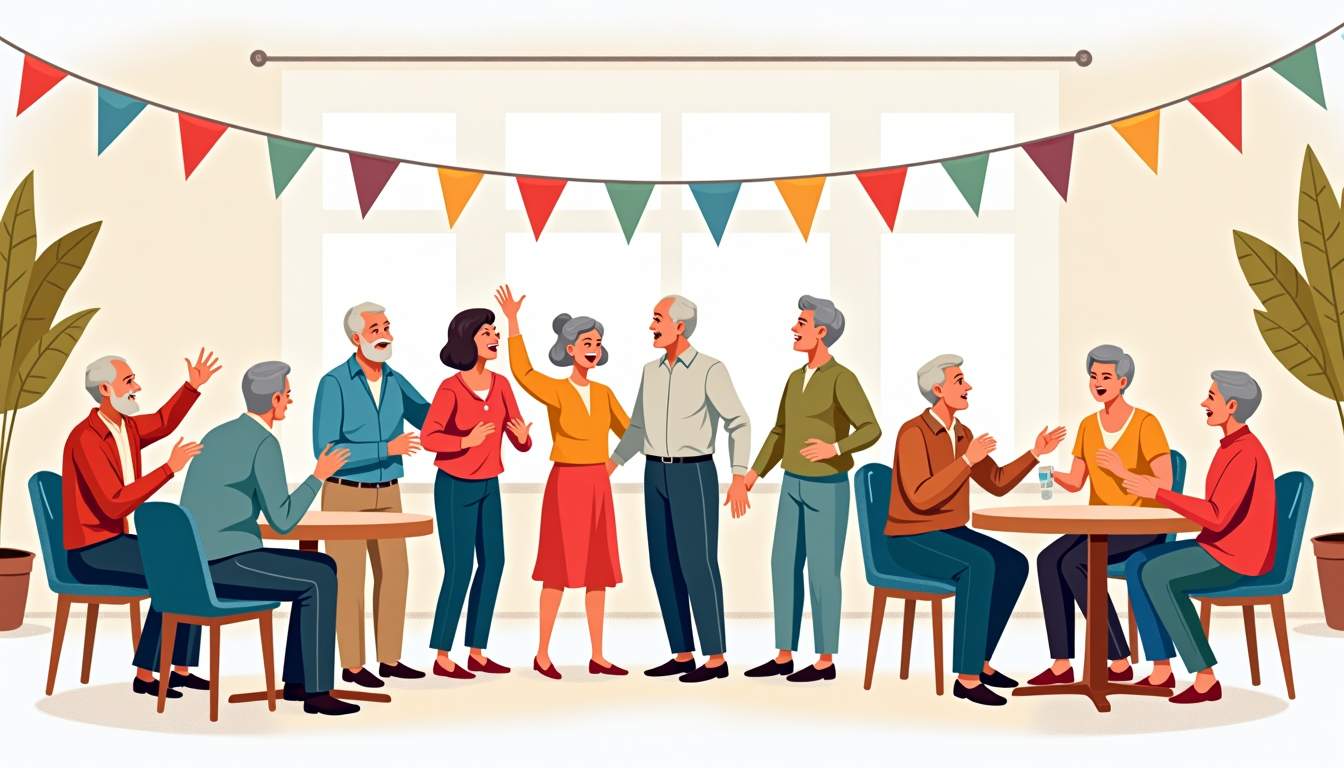
Creating engaging, meaningful events in retirement communities brings residents together, stimulates minds and bodies, and strengthens the sense of belonging. Thoughtful planning and a bit of creativity turn ordinary days into memorable experiences that residents look forward to. This article outlines inventive event ideas, practical planning tips, and advice for adapting programs to diverse abilities and interests.
Social activities are more than entertainment; they are essential to emotional and cognitive health. Regularly scheduled events reduce feelings of isolation, sustain mental acuity, and encourage physical activity. Well-designed programs foster friendships, boost morale, and create a sense of routine that contributes to overall wellbeing.

Events tailored to life histories and cultural backgrounds honor residents' identities. Incorporating favorite music, familiar games, and opportunities to share stories helps maintain continuity with past lives while creating new, shared memories within the community.
Moreover, club events provide valuable opportunities for intergenerational interaction, where family members and volunteers join residents in shared activities. These connections help bridge generational gaps and enrich the social environment, adding layers of meaning to the residents' daily experiences. The diversity of event offerings ensures that residents with varying interests and abilities can participate, fostering inclusivity and reducing barriers to engagement.
Engagement in club events has also been shown to improve physical health by motivating residents to partake in light exercise, such as dancing or walking groups, which promote mobility and balance. Cognitive benefits arise from activities like trivia contests, book clubs, and art classes that challenge memory, critical thinking, and creativity. By combining physical, emotional, and mental stimulation, these events play a pivotal role in enhancing quality of life within retirement communities.
Successful events start with clear goals: what should attendees feel, learn, or experience? Defining outcomes helps to shape format, duration, necessary resources, and ways to measure success. Goals might include increasing daily activity levels, stimulating memory recall, encouraging intergenerational connection, or simply providing joyful entertainment.
Accessibility and inclusion are essential. Events must consider mobility limitations, hearing or vision impairments, and cognitive differences. Adaptations such as large-print materials, seated dance options, or simplified instructions ensure broad participation. Safety protocols and easy access to staff should be built into every plan.
Attention to scheduling and timing can greatly influence participation rates. Understanding residents' daily routines and energy levels allows planners to select optimal times for events, avoiding conflicts with meal times or rest periods. Additionally, varying the type and intensity of activities throughout the week can cater to diverse interests and abilities, maintaining sustained enthusiasm and engagement.
Effective communication is also critical in successful event planning. Utilizing multiple channels, such as printed flyers, digital newsletters, and announcements during communal gatherings, ensures information reaches all residents. Clear, friendly messaging that highlights the benefits of attendance and any necessary preparations helps reduce anxiety and encourages involvement from even the most reluctant participants.
Budget constraints are common, but creativity can work around limited funds. Local volunteers, partnerships with schools or arts organizations, and donations can supply materials or talent. Prioritize events with high engagement potential and low recurring cost, while reserving a portion of the budget for seasonal or special celebrations.
Engaging residents in the planning process increases attendance and satisfaction. Regular surveys, suggestion boxes, and planning committees allow residents to voice preferences and contribute skills. Feedback after events helps refine offerings and demonstrates that resident opinions matter.
Involving residents as peer facilitators or co-hosts not only empowers them but also fosters a sense of community ownership. When residents take active roles in organizing or leading activities, their unique perspectives can generate innovative ideas and encourage participation among their peers.
Moreover, documenting successes and challenges after each event through detailed reports or informal discussions enables continuous improvement. Sharing these insights with all stakeholders, including residents, staff, and partners, builds transparency and collective commitment to the program’s evolution.
Fresh ideas keep programming lively. The following concepts are adaptable and can be mixed to fit various interest groups and ability levels. Each idea emphasizes social connection, meaningful participation, and opportunities for residents to contribute.
Themed socials break routine and offer playful ways to reminisce. Options include decades dances, tropical luaus, or vintage tea parties. Costume suggestions and themed decorations enhance the atmosphere. Accessible music choices and seated dance alternatives make these events suitable for a range of mobility.
Partner with local musicians or volunteer bands to offer live music. Recorded playlists curated with residents' favorite songs are a low-cost alternative and can be tailored to evoke memories and conversations.
Food-related activities are universally appealing and provide sensory stimulation. Host cooking demonstrations, baking circles, or tasting nights featuring international cuisine. Recipe exchanges and "family recipe" storytelling add a personal element that encourages residents to share cultural heritage.
Consider nutrition and dietary restrictions when planning menus. Small portions, bite-sized samplers, and allergen labeling ensure safety while allowing residents to enjoy diverse flavors.
Bringing younger generations into the community revitalizes energy and promotes mutual learning. Invite local school chapters to collaborate on art projects, music sessions, or gardening days. Book clubs that pair students with residents create ongoing mentoring relationships and stimulate conversation across age groups.
These partnerships benefit both sides: students gain empathy and history lessons, while residents enjoy companionship and a renewed sense of purpose.
Arts programs support fine motor skills, self-expression, and cognitive engagement. Offer painting, mosaic, pottery, or textile workshops with adaptations for limited dexterity—larger brushes, non-slip mats, or pre-cut materials. Display finished works around the facility to celebrate creativity and motivate participation.
Guest artists and local craft groups often welcome opportunities to teach and bring fresh techniques. Rotating themes keep projects interesting and allow residents to build a portfolio over time.
Reminiscence sessions prompt storytelling and stimulate memory recall using prompts such as old photographs, music from past decades, or themed sensory boxes. Life story projects, where residents dictate or write memories to create personal books, provide legacy pieces for families and promote cognitive engagement.
Memory cafés—casual gatherings focused on sharing memories—create a relaxed social environment for those with early-stage memory loss and their families.
Attention to logistics transforms ideas into smooth-running events. Good logistics consider timing, staffing, equipment, and contingency plans. A well-structured schedule accounts for resident energy levels, transportation, and overlapping activities.

Morning programs suit those who are most alert early in the day, while late afternoon or early evening events capture different crowds. Avoid scheduling multiple high-attendance events simultaneously. Regular weekly activities create routine, while monthly special events build anticipation.
Assign clear roles: event lead, setup crew, activity facilitators, and safety monitors. Volunteers often bring warmth and extra hands, but require orientation to community policies and resident needs. Provide briefings and written instructions so helpers understand expectations and can respond to various situations.
Create a checklist for common supplies—name tags, audiovisual equipment, seating, cleaning materials, and first aid. Accessibility tools such as portable microphones, magnifiers, and mobility aids should be available. Ensure spaces are clutter-free and routes are navigable for walkers and wheelchairs.
Promotion increases turnout and builds momentum. Use multiple channels to reach residents, families, and staff. Simple clarity in messaging—what, where, when, and why—reduces confusion and encourages RSVP where helpful.
Notice boards, daily activity calendars, and printed newsletters remain effective for residents. Announcements during meals and morning rounds reinforce awareness. Visual reminders with photos or icons help residents with cognitive impairment identify events they might enjoy.
Invite families to participate or observe special events. Use social media or community newsletters to highlight highlights and attract volunteers or performers. Partnerships with local businesses, churches, and schools can increase resources and expand audiences.
Assessing events ensures ongoing improvement. Attendance numbers, resident feedback, and observations about engagement levels reveal what works and what needs change. Short, easy-to-complete feedback forms or conversational check-ins can provide meaningful insights.
Track participation rates, repeat attendance, and demographic spread to ensure wide appeal. Qualitative notes—smiles, anecdotes, and spontaneous interactions—capture benefits not visible in numbers. Over time, trends will show which events foster connection and which require rethinking.
Adjustments based on feedback might include shorter sessions, louder sound systems, or different activity times. Allow flexibility to add or retire events seasonally. Celebrating successes and incorporating resident suggestions reinforces a culture of responsiveness.
Certain factors require extra attention: residents with dementia, those with complex medical needs, cultural sensitivities, and pandemic-related precautions. Thoughtful accommodations preserve participation without compromising safety or dignity.
Simplify instructions, use clear visual cues, and create predictable event formats. Quiet spaces and calm facilitators help prevent overstimulation. Incorporate multisensory elements—textures, smells, and music—to anchor experiences and evoke positive memories.
Maintain hygiene practices for food events, shared materials, and close-contact activities. Have hand sanitizer, gloves, and cleaning supplies available. Health screenings and clear policies for illness help protect vulnerable residents while allowing events to continue when safe.
Seasonal events provide anchors throughout the year, offering variety and cultural relevance. Holidays, harvest festivals, and summer fairs create opportunities for family involvement and community celebration.
Decorations, themed menus, and sensory elements like seasonal scents or tactile displays enhance immersion. Seasonal craft projects become keepsakes, while holiday concerts and fairs create lively social hubs. Include quiet alternatives for those who prefer low-stimulation environments.
Recognize a range of holidays and cultural traditions to reflect residents' backgrounds. Inviting residents to share customs and lead small presentations honors personal histories and educates others within the community.
Creating a varied calendar of club events in retirement homes requires balance: simplicity and novelty, routine and surprise, safety and spontaneity. Resident-centered planning, accessible design, and partnerships with local organizations amplify impact and sustainability.

When events are thoughtfully planned and responsive to resident needs, they foster joy, connection, and purpose. A vibrant event culture becomes a defining feature of community life—one that uplifts residents, engages families, and sustains meaningful relationships for years to come.
At Tennessee National, vibrant social clubs and a full calendar of exclusive events create the perfect setting for connection, creativity, and joy—just like the engaging retirement home club events discussed above. Experience luxury living with breathtaking amenities, scenic trails, and opportunities to build meaningful relationships in a premier gated community. Schedule your private tour today and start making cherished memories every day at Tennessee National.